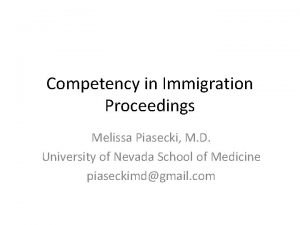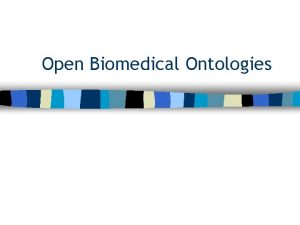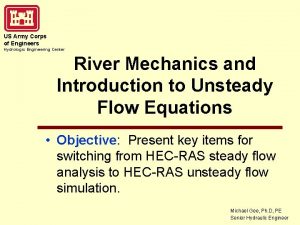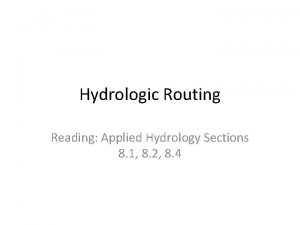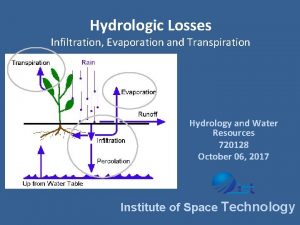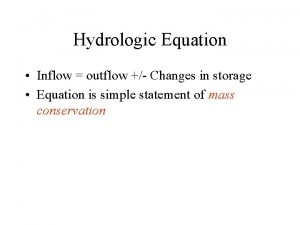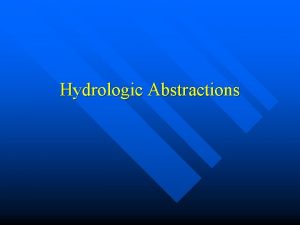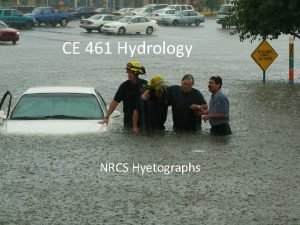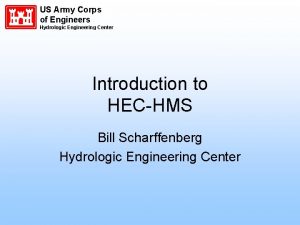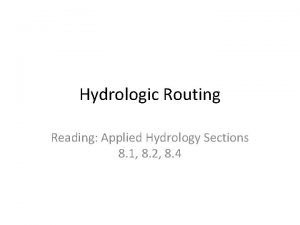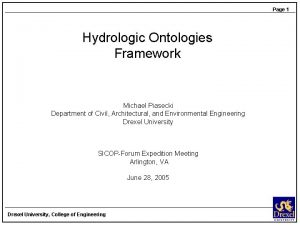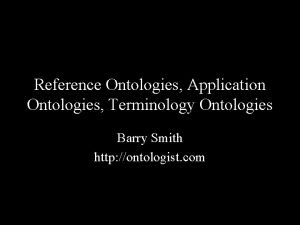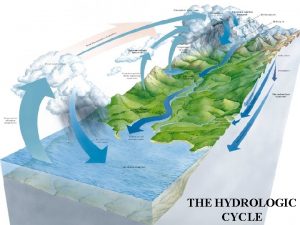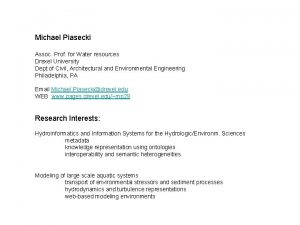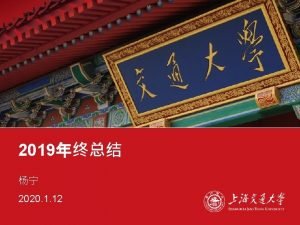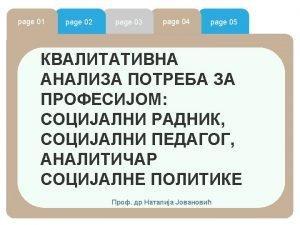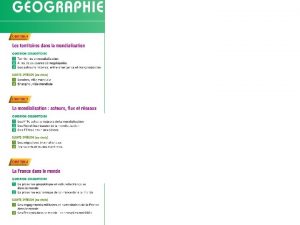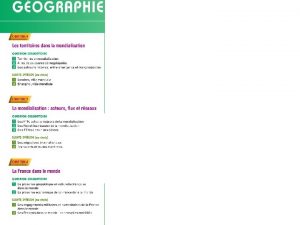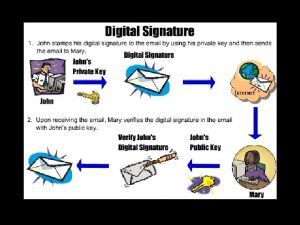Page 1 Hydrologic Ontologies Framework Michael Piasecki Department













- Slides: 13

Page 1 Hydrologic Ontologies Framework Michael Piasecki Department of Civil, Architectural, and Environmental Engineering Drexel University SICOP-Forum Expedition Meeting Arlington, VA June 28, 2005 Drexel University, College of Engineering

Page 2 Why Hydrologic Ontologies? 1. To resolve semantic heterogeneities between disparate metadata descriptions, e. g. “Gauge Height = Stage = Stream Gauge”, by representing metadata profiles in the Web Ontology Language. 2. To create a Hydrologic Controlled Vocabulary for navigation and discovery of hydrologic data, e. g. a framework that aids discovery (on a more generalized level) and defines markup (on a finer or “leaf” level) to identify specific data sets within a Digital Library. 3. To develop a conceptual representation for the Hydrologic Domain within which data discovery and information extraction can be inferred from knowledge representations. Lets focus on this …………… Drexel University, College of Engineering

Page 3 Domain and Scope of Hydrologic Ontologies Basic questions: • What is the domain that the ontology will cover? • For what we are going to use the ontology? • For what types of questions the information in the ontology should provide answers? • Who will use and maintain the ontology? Competency questions (litmus test): • What streams belong to Hydrologic Unit XYX? • What is the net volume flux in watershed A for month Y? • What was the accumulated rainfall in region Y because of storm X? • What is the discharge time-history at point X as a result of storm Y passing through? • ? ? ? Drexel University, College of Engineering

Page 4 Status Upper Hydrologic Ontology We currently What we need have is Many More ISO 19108 Temporal Objects ARCHydro Many More ISO 19115 Geospatial ISO 19103 Units/Conversion USGS Hydrologic Unit Code Hydrologic Processes Sedimentation Many More Ontology Examples Drexel University, College of Engineering

Page 5 Example Use Drexel University, College of Engineering

Page 6 GEON sponsored Workshop • San Diego Supercomputer Center January 27 -28, 2005 Many thanks to Chaitan Baru (agree to sponsor) and Margaret Banton for organizing. • Participants Michael Piasecki David Maidment Thanos Papanicolaou Edwin Welles Luis Bermudez llya Zaslavsky Kai Lin Ashraf Memon Drexel University (convener) University of Texas, Austin University of Iowa NOAA, National Weather Service, OHD Monterrey Bay Aquarium Research Institute (MBARI) SDSC • Objective: Discuss concepts for Upper Hydrologic Ontology Drexel University, College of Engineering

Page 7 Be cognizant of ………. A few rules: 1) There is no one correct way to model a domain— there always viable alternatives. The best solution almost always depends on the application that you have in mind and the extensions that you anticipate. 2) Ontology development is necessarily an iterative process. 3) Concepts in the ontology should be close to objects (physical or logical) and relationships in your domain of interest. These are most likely to be nouns (objects) or verbs (relationships) in sentences that describe your domain. Drexel University, College of Engineering

Page 8 1 st Alternative Hydrologic Ontologies Geo. Volume concept horizontal slices no vertical tracing Pros: class: hydrology categorization along spatial separations, easy to follow closely linked to hierarchical structure of CV traditional linkage to disciplines and sub-disciplines subclass: atmos water horizontal flow path is well represented model domains are typically aligned with horizontal layers subclass: precip 15 km Cons: subclass: ……… subclass: surface water vertical flow (budget) not represented well need prior knowledge in which domainsubclass: ……. . to search for data ~2 m on low levels of ontology, this processes are sub-items may not suit the general idea of moving from more subclass: sub-surf. general to more specificwater concepts -1 km Drexel University, College of Engineering

Page 9 2 st Alternative Hydrologic Ontologies Measurement concept everything is a measure expand to include phenomena & features Feature: Basin Curve-# …… Drexel University, College of Engineering

Page 10 3 st Alternative Hydrologic Ontologies “Interests” concept class: hydrology models (prediction, analysis) data models (obs, measurements) processes (phenomena) representations (maps, time series, …) Pros: direct subclass: models link to processes & data models of interest can link data sets directly with processes subclass: Sediment can make use ofdimension many already existing conceptualizations models (statistical, deterministic etc) can be well mapped subclass: Heat Flux subclass: data Cons: subclass: Flooding not very good for. Type hierarchical navigation there is no general -> specific transition difficultsubclass: processes when trying to use for CV or keyword lists might be difficult for “new” knowledge discovery …. Data Model Arc. Hydro Drexel University, College of Engineering

Page 11 Outcomes Hydrologic Ontologies • Development of a higher level Hydrologic ontology based on the afore mentioned concepts. The group felt no clear affinity for one or the other concepts. As a result, two top ontologies may need to be developed and placed next to each other. Depending on the task at hand a user may use either one of them to address the objective. • Development of lower ontologies that can be merged with the top ontology. a) development of ontologies from database schema (like ARCHydro and the NWIS data base) via XML schema libraries b) development of a processes (or phenomena) ontology c) development of modeling ontology d) inclusion of very task specific (service) ontologies, e. g. units, temporal • Development of a well defined Hydrologic Controlled Vocabulary that can be used to query the hydrologic realm. One suggestion made was to use common queries as a starting point to identify important aspects in the taxonomy of the CV. Drexel University, College of Engineering

Page 12 Application Hydrologic Ontologies Upper Ontology: Measurements coupled with Lower Ontology: HUC system HYDROOGLE Drexel University, College of Engineering

Page 13 Thank you Questions? http: //loki. cae. drexel. edu: 8080/web/how/me/metadatacuahsi. html Drexel University, College of Engineering
